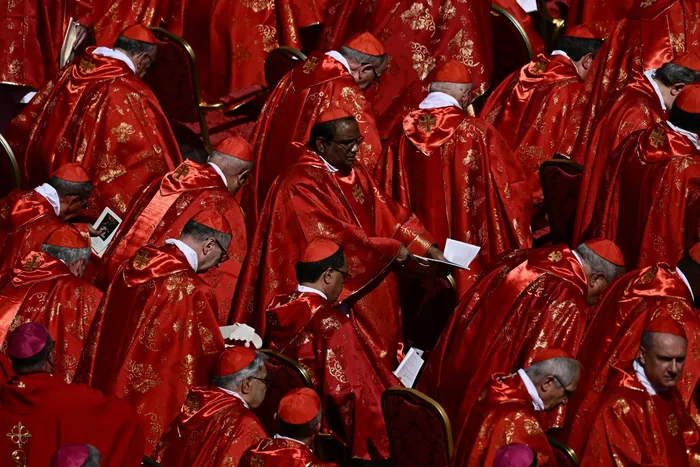
Cardinals attend the late Pope Francis’ funeral ceremony at St Peter’s Square at the Vatican on Saturday April 26. The conclave to elect the new pope will take place in the Sistine Chapel, with about 135 cardinal-electors under the age of 80 eligible to participate.
Image: Filippo MONTEFORTE / AFP
The Vatican has confirmed that the papal conclave to elect a successor to Pope Francis will commence on Wednesday, May 7, 2025. This date follows the recent death of Pope Francis on April 21, 2025, and adheres to the Church's protocol, which allows for a conclave to begin up to 20 days after the papacy becomes vacant.
The conclave will take place in the Sistine Chapel, with approximately 135 cardinal-electors under the age of 80 eligible to participate. These cardinals, representing 71 countries, will gather to select the 267th pope of the Roman Catholic Church.
The conclave is expected to last several days, with multiple ballots held daily. A two-thirds majority is required for the election of a new pope. Traditionally, the outcome of each ballot is signalled by the colour of smoke emitted from a chimney atop the Sistine Chapel: black smoke indicates no election, while white smoke signifies the election of a new pope.
Given the procedural requirements and the number of electors, it is anticipated that the conclave will conclude by Sunday, May 11, 2025, with the emergence of white smoke and the announcement of "Habemus Papam" (We have a pope).
The election process is expected to be closely watched, with speculation about potential candidates and the direction the Church may take under new leadership. The outcome of the conclave will have significant implications for the future of the Catholic Church and its role in global affairs.
As the conclave approaches, the world awaits the emergence of white smoke from the Sistine Chapel, signalling the election of a new pope and the beginning of a new chapter for the Catholic Church.
